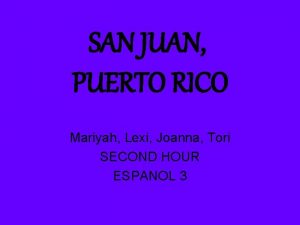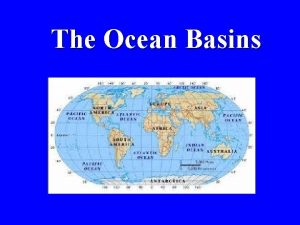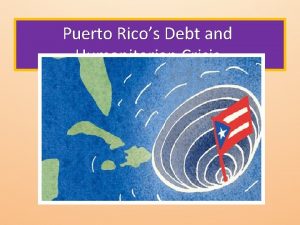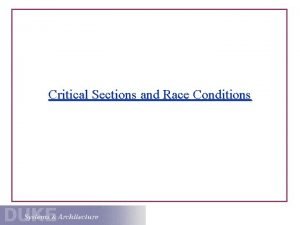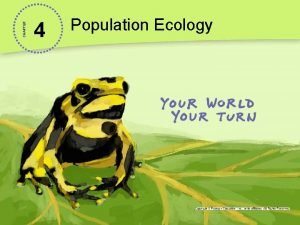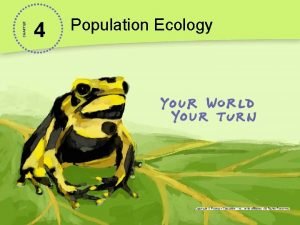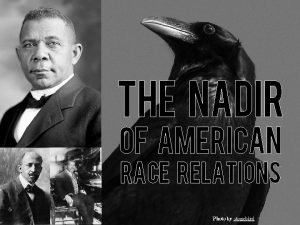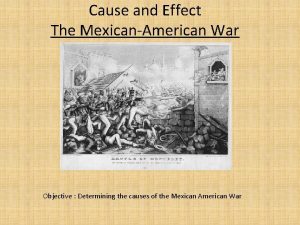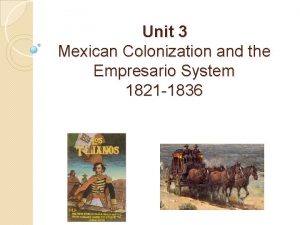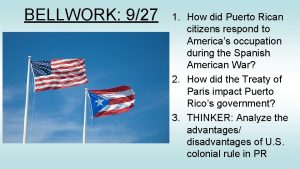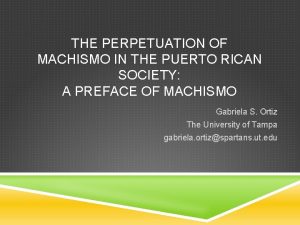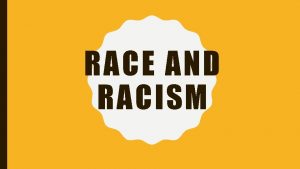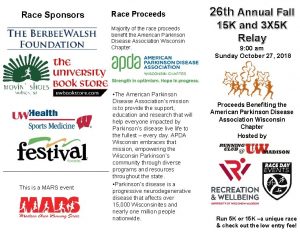Ch 9 Race Relations Mexican and Puerto Rican













- Slides: 13

Ch. 9: Race Relations- Mexican and Puerto Rican Americans n n n Facts about Mexican American Latinos from Census 2000 24 million Mexican American Latinos 42% are foreign-born 37% of Mexican Americans are under 18 years of age 31% of Mexican American households contain five or more people

U. S. Census Bureau’s Historical Difficulties in Identifying Mexican and Puerto Rican Americans n 1930: called them “other” n 1940: used Spanish mother tongue n 1950, 1960, 1970: used Spanish surnames n 1980: special “origin of descent” question n

A Brief History of Puerto Rican Political Status n n 1492: claimed by Christopher Columbus for Spain 1508: Juan Poncé de Leon colonized the island decimated the native population 1898: U. S. invaded and declared it freed from Spanish oppression 1950: developed a commonwealth model of selfgovernance (associated with U. S. )

The collapse of the Puerto Rican sugar industry in the 1950 s triggered the beginning of La Migracion, one of the most dramatic voluntary exoduses in world history. n For many years, the continuous shuttle migration prevented an organized community life from fully developing n

Latino Cultural Issues n n n Familism = an orientation in which the needs of the family are more important than the needs of the individual Extended Families = families that include parents, children, grandparents, and other relatives or godparents Machismo = a Spanish term referring to an attitude of masculine superiority and dominance.

n Bilingual Education = the use of two languages in teaching subjects other than the use of a foreign language. Transitional bilingual programs teach subject matter in the student’s native language until they can learn in English; partial bilingual programs teach oral skills in both languages, but make only limited use of instruction in the child’s native language; and full bilingual programs aim at maintaining and developing both the minority language and English

The Bilingual Education Debate n n Anglo-conformists argue that it is the responsibility of the schools to teach English and to promote assimilation by substitution Pluralists counter that the schools should strive to recognize that children learn best in a language they understand that to maintain a strong nation, bilingual programs should strive to protect the language and culture of immigrant groups

n Lau Task Force Remedies = guidelines interpreting the Lau v. Nichols decision that recommended bilingual education at the elementary school level for children with limited English skills

Characteristics of the Current Hispanic Group in the U. S. Hispanics are the largest ethnic group in the U. S. and are steadily increasing in number all the time n Concentrated in specific geographical regions n Mexican Americans in the southwest, Puerto Ricans in the northeast, and Cubans in southeast Florida n

Despite nativist fears, English language mastery is a common goal of Hispanic parents for their children n In 2002 from 26 -50% of all Hispanics ages 25 and older had not completed high school n More than one in five Hispanic families lives in poverty. n A higher percentage of Puerto Ricans live in poverty than any other group, whereas Cuban Americans are least likely to live in poverty n



Mexicans and Puerto Ricans: A Comparison n Compared to Mexican Americans, most Puerto Ricans are less likely to have arrived recently, are better education, and speak better English ¨ Employed Puerto Ricans earn more than employed Mexicans n Many factors account for this pattern including the difference in the number of families headed by females
 Puerto rican lexi
Puerto rican lexi Haileythepuertorican
Haileythepuertorican Loihi seamount
Loihi seamount Puerto rican debt crisis
Puerto rican debt crisis Difference between reaction turbine and impulse turbine
Difference between reaction turbine and impulse turbine Design of dams
Design of dams Data race vs race condition
Data race vs race condition Costa rican ox carts
Costa rican ox carts Finding gold in a costa rican cloud forest
Finding gold in a costa rican cloud forest Finding gold in a costa rican cloud forest
Finding gold in a costa rican cloud forest Nadir of race relations
Nadir of race relations Employee relations in public relations
Employee relations in public relations Effects of the mexican-american war
Effects of the mexican-american war Empresario system
Empresario system
